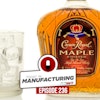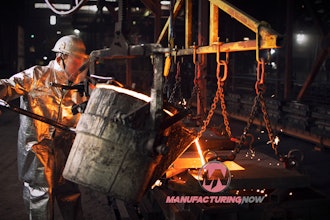In this Q&A, Klüber Lubrication’s Toby Porter discusses how lubricants can improve production in snack and baking facilities.
Q: How do lubricants factor into a snack or bakery facility’s level of efficiency?
A: The operating environment of a snack and/or baking facility can have a challenging effect on the performance of a lubricant. For instance, high levels of humidity and increasing temperatures can work against both the surface protection and long life that even some specialty lubricants can provide. What this means is that the facility may be lubricating more often than necessary — or perhaps isn’t getting the longest life possible from its components. This can lead to increased downtime, frequent maintenance and, ultimately, lower levels of efficiency.
Q: What are some key advances in food-grade lubricants within the past few years?
A: We’ve seen advances in both the formulation of lubricants used in the food industry and also the type of safety standards that have become increasingly important for both lubricant and food manufacturers.
A good example is an advance in food-grade formulations that use a calcium sulfonate complex thickener. This has become more prevalent due to the unique performance, which depending on the application, can mean improved load carrying ability and high levels of protection, even in the presence of water.
Advances in the safety realm include additives and ingredients that have attained NSF registration to be used in a food grade formulation. Also, the ISO 21469 standard is a certification that lubricant suppliers can adopt. The certification defines hygiene requirements for the manufacturing and the use of lubricants that can have incidental product contact.
Q: What are the most-important factors related to specialty, food-grade lubricants that snack producers and bakery companies should understand?
A: The most important factors that snack and baking facilities need to be concerned about include the potential for contamination of the food product, the machinery specifications from the OEM and the overall tribological environment.
It’s important to understand the risk level associated with the application point so that a decision can be made on the type of lubricant that should be used, the type of safety registration that is appropriate and the proper storage and use of the lubricant.
The specifications from the equipment manufacturer need to be reviewed, because, in many cases, the OEM has already partnered with a lubricant manufacturer to dial in a specific type of lubricant to provide optimum performance. It’s important to review in depth, why that original lubricant specification was made and if any differences exist at the specific site where the machinery is currently located and operating in.
Finally, understanding the overall tribological environment is extremely important. That’s because changes in factors such as temperature, load, speed and outside media can have a significant impact on the surface protection a lubricant provides. Just a 20- to 30-degree increase in chain temperature, for example, could mean a higher oil evaporation rate, which could necessitate either changing the application method, or, possibly, selecting a different type of food grade base oil to provide optimum protection at higher temperatures.
Q: What lubricants are recommended in baking processes for tortillas and flat breads, as examples, where chain temperatures can reach over 1000°F?
A: Extreme temperatures are a challenge, because as temperatures increase, a typical chain oil will evaporate and sacrifice the protection of the chain. In these cases, a solid lubricant, such as black graphite can be used. Therefore, when the oil inevitably evaporates, the solid stays behind to protect the chains. The problem is that with many solid lubricants, the food grade registration is sacrificed.
The other option is to go with a food grade lubricant with an upper limit at 500 to 600 °F. Above those temperatures, the oil will evaporate, requiring constant re-lubrication and possibly leaving behind high levels of residue inside the chain.
One solution here is to use a formulation that combines the best of both worlds — use a specific solid lubricant that maintains its NSF H1 status for incidental contact, with a base oil that when it does evaporate, does so without leaving high levels of residue. We have recently introduced an oil just like this.
Q: How does it work in application?
A: As with any solid lubricant, the solids are held in suspension within a base oil, such as polyalkylene glycol. Consequently, solid lubricants need to be mixed. In an automated pumping system, some sort of agitator is used. Then applying the lubricant at temperatures below 300°F gives the fluid carrier time to reach the application points of the chain before it smokes off. This allows the solid lubricant to be carried into the chain to protect components even at extreme temperatures.






















